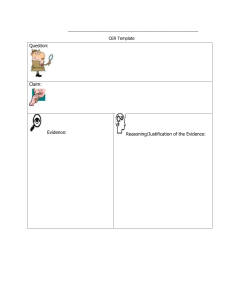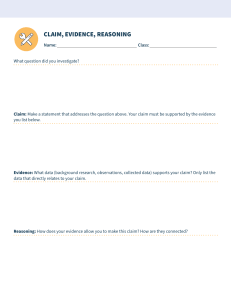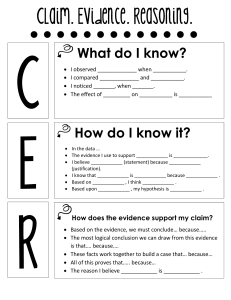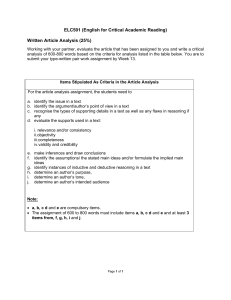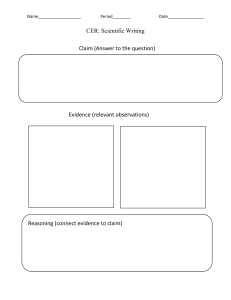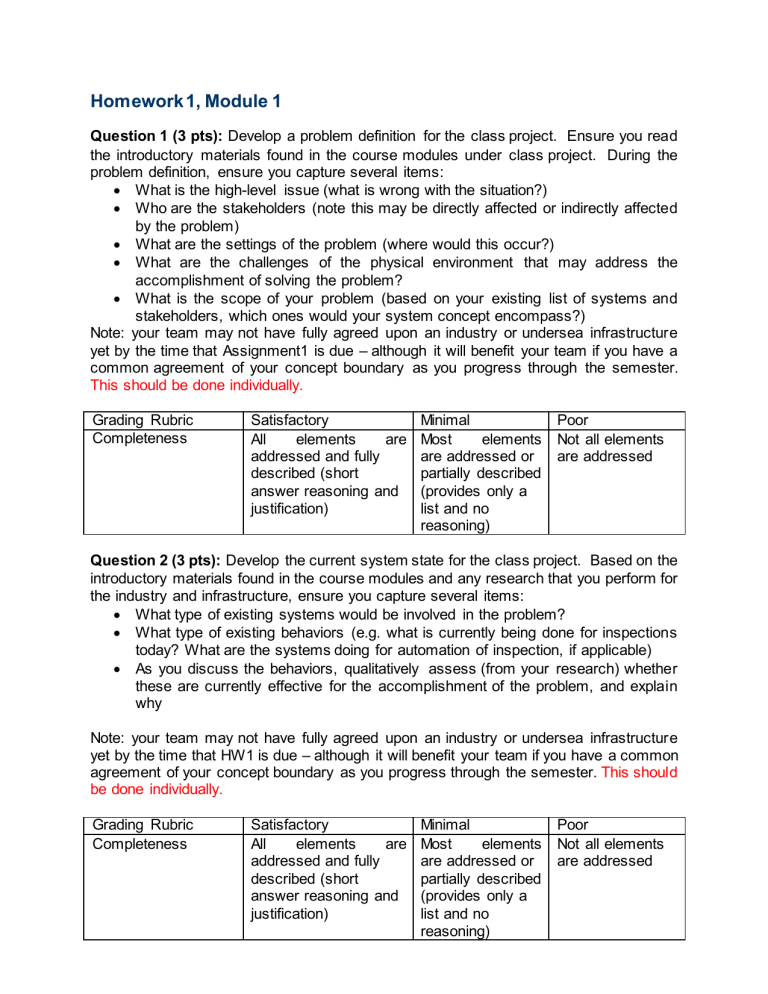
Homework 1, Module 1 Question 1 (3 pts): Develop a problem definition for the class project. Ensure you read the introductory materials found in the course modules under class project. During the problem definition, ensure you capture several items: • What is the high-level issue (what is wrong with the situation?) • Who are the stakeholders (note this may be directly affected or indirectly affected by the problem) • What are the settings of the problem (where would this occur?) • What are the challenges of the physical environment that may address the accomplishment of solving the problem? • What is the scope of your problem (based on your existing list of systems and stakeholders, which ones would your system concept encompass?) Note: your team may not have fully agreed upon an industry or undersea infrastructure yet by the time that Assignment1 is due – although it will benefit your team if you have a common agreement of your concept boundary as you progress through the semester. This should be done individually. Grading Rubric Completeness Satisfactory All elements are addressed and fully described (short answer reasoning and justification) Minimal Most elements are addressed or partially described (provides only a list and no reasoning) Poor Not all elements are addressed Question 2 (3 pts): Develop the current system state for the class project. Based on the introductory materials found in the course modules and any research that you perform for the industry and infrastructure, ensure you capture several items: • What type of existing systems would be involved in the problem? • What type of existing behaviors (e.g. what is currently being done for inspections today? What are the systems doing for automation of inspection, if applicable) • As you discuss the behaviors, qualitatively assess (from your research) whether these are currently effective for the accomplishment of the problem, and explain why Note: your team may not have fully agreed upon an industry or undersea infrastructure yet by the time that HW1 is due – although it will benefit your team if you have a common agreement of your concept boundary as you progress through the semester. This should be done individually. Grading Rubric Completeness Satisfactory All elements are addressed and fully described (short answer reasoning and justification) Minimal Most elements are addressed or partially described (provides only a list and no reasoning) Poor Not all elements are addressed Question 3 (3 pts): Develop the desired end state for the class project. Based on the introductory materials found in the course modules and any research that you perform for the industry and infrastucture, ensure you capture several items: • What does the overall end state for your system scope look like? (this should be a high level paragraph to describe what would occur if your end state is achieved; make sure you are quantifying as much of the end state as possible) • Given all of the stakeholders listed above, describe in 2-3 sentences what the end state looks like in their perspective • Given the existing systems listed above, describe in 2-3 sentences what the end state looks like for that system – would it be retained, modified, or discarded? Note: your team may not have fully agreed upon an industry or undersea infrastructure yet by the time that Assignment 1 is due – although it will benefit your team if you have a common agreement of your concept boundary as you progress through the semester. This should be done individually. Grading Rubric Completeness Satisfactory All elements are addressed and fully described (short answer reasoning and justification) Minimal Poor Most elements are Not all elements addressed or are addressed partially described (provides only a list and no reasoning) Question 4 (1 pt): Coordinate with your team members for the customer interview next week. You will need the customer interview questions to answer the initial capabilities document assignment. This may be done as a team product. Grading Rubric Completeness Satisfactory At least 20 questions developed; all members participated Minimal Fewer than 20 questions developed; all members participated Poor Fewer than 20 questions developed; not all members participated
